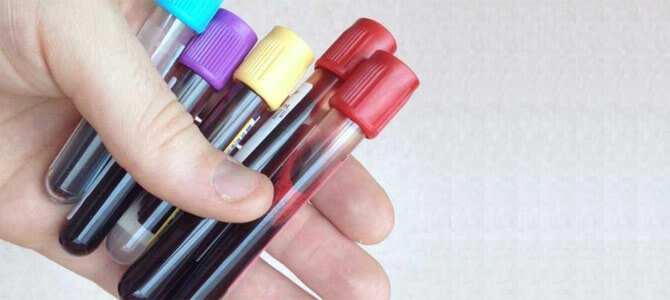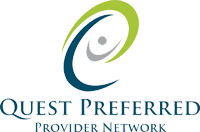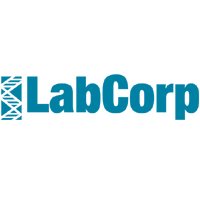
STD Testing Centers
Mount Horeb, WI
Same Day Service
No Doctor Visit Or Insurance Required
Accredited Drug Testing provides multiple STD tests at our Mount Horeb, Wisconsin testing centers for individuals who may have been exposed to or showing symptoms of an STD. Millions of Americans have some form of an STD and our testing is provided in a confidential manner. STD tests at our Mount Horeb, WI locations may be ordered for one specific type of test or you may order a multiple panel screening which includes several STD tests. Same day service is available, and we have multiple Mount Horeb, Wisconsin STD testing centers within minutes of your home or office. All testing information and results are confidential.
358 JUNCTION RD Junction Point Shopping Center 11.7 miles
MADISON, WI 53717
752 N HIGH POINT RD 12.0 miles
MADISON, WI 53717
554 Grand Canyon Drive Suite 554 12.6 miles
Madison, WI 53719
2825 HUNTERS TRL 12.8 miles
PORTAGE, WI 53901
5522 MEDICAL CIR STE A 13.6 miles
MADISON, WI 53719
1800 2ND ST 15.1 miles
NEW GLARUS, WI 53574
309 S MAIN ST 15.1 miles
BLANCHARDVILLE, WI 53516
1313 FISH HATCHERY RD 17.4 miles
MADISON, WI 53715
36 S BROOKS ST 17.4 miles
MADISON, WI 53715
1102 S PARK ST STE 400 17.5 miles
MADISON, WI 53715
1300 S CENTURY AVE 18.5 miles
WAUNAKEE, WI 53597
753 N MAIN ST 18.6 miles
OREGON, WI 53575
112 HELEN ST 18.9 miles
SAUK CITY, WI 53583
1574 W Broadway STE 103 19.7 miles
Madison, WI 53713
1011 E MADISON ST 20.1 miles
SPRING GREEN, WI 53588
436 SUNRISE DR 20.1 miles
SPRING GREEN, WI 53588
800 COMPASSION WAY 20.2 miles
DODGEVILLE, WI 53533
150 E JEFFERSON ST 20.3 miles
SPRING GREEN, WI 53588
1204 JOSEPH ST 20.3 miles
DODGEVILLE, WI 53533
1204 JOSEPH ST STE 100 20.3 miles
DODGEVILLE, WI 53533
156 W JEFFERSON ST 20.3 miles
SPRING GREEN, WI 53588
4359 HWY 138 21.0 miles
OREGON, WI 53575
1619 N STOUGHTON RD 22.2 miles
MADISON, WI 53704
104 HIGH ST 24.5 miles
MINERAL POINT, WI 53565
Testing services include physician referral, collection of the specimen, complete laboratory analysis and confidential and secure result reporting.
** Patients who have high insurance deductibles, co-pays or do not have insurance can access important health and wellness testing by scheduling/Ordering a confidential clinical test through Accredited Drug Testing By Phone or On-line.
The process to schedule a lab/blood test in Mount Horeb, Wisconsin is fast and easy!
Step 1: Schedule/Order your test online at www.accrediteddrugtesting.com/lab-test-order or call our scheduling department at 800-221-4291. You do not need to visit a doctor to order a test.
Step 2: Provide confidential and secure patient information including the type of test, zip code of the location area you would like to take the test and payment information (self-pay).
When completed you will receive a patient registration form by email where you can immediately proceed to the testing location in the Mount Horeb, Wisconsin area. Same day service is available and your registration pass will have the testing location address and hours of operation.
Step 3: After your test has been analyzed by one of our nationally CLIA and FDA certified laboratories (Quest/ LabCorp) your results will be sent through a confidential, secure and encrypted portal to the email address that you provided. In the event that the test is non-negative, abnormal or other circumstances, a consultation with the referring physician is available.
STD Definitions/Descriptions
STD stands for Sexually Transmitted Disease, also known as STI or Sexually Transmitted Infection, meaning that these diseases are most often, but not exclusively, spread by sexual intercourse.
STDs are passed from one person to another through sexual activity which can include vaginal intercourse, anal intercourse and/or anal intercourse. Though not as common, STDs can also be transmitted through intimate physical contact such as heavy petting.
STDs do not always cause symptoms, or they may only cause mild symptoms. This makes it very possible to have an infection and not know it. Therefore, if you are sexually active it is important to get tested at least once a year. You will find the most common types of STD and STI testing below.
HIV - HIV is a sexually transmitted disease (that can be spread outside of sexual contact) known as Human Immunodeficiency Virus (HIV). It is the virus that causes AIDS and interferes with the body's ability to fight infections.
Herpes 1 and 2 - Herpes is an infection caused by HSV (herpes simplex virus). This virus affects the external genital, anal region, mucosal surfaces and skin in other parts of the body. There are two types of herpes simplex viruses: HSV-1 9 herpes type 1, or oral herpes) and HSV-2 (herpes type 2, or genital herpes).
Gonorrhea - Gonorrhea is a common sexually transmitted disease that can cause infections in the genitals, rectum and throat for both men and women. If untreated it can cause serious health issues, however, if it is caught in time it can be cured with the right medicine.
Chlamydia - Chlamydia is a common sexually transmitted disease that may not show symptoms. However, those that do show symptoms may experience genital pain and discharge from the vagina or penis. If left untreated it can cause damaging effects to the woman's reproductive system.
Syphilis - Syphilis is a sexually transmitted disease that develops in different stages. The first stage involves a painless sore on the genitals, rectum or mouth. After that initial sore heals, the second stage is a rash. Then, there are no symptoms until years later which is the final stage - damaged brain, nerves, eyes and/or heart.
Many STDs can be easily cured with medication, so you can just finish your treatment and get on with your life. And even though some STDs can't be cured, there are lots of ways to treat your symptoms and prevent you from giving your STD to anyone you have sex with.
People with STDs can be in relationships, have sex, and live totally normal lives. Most people get an STD at least once, and millions are living with STDs now. Having an STD is nothing to feel ashamed of, and it doesn't mean you're "dirty" or a bad person , it just means you're a pretty normal human who got an infection. The reality is that STDs can happen to anybody who's ever been sexual with someone, which is almost everybody on earth. And a few STDs can be spread in non-sexual ways, too.
Accredited Drug Testing can schedule your STD test at an Mount Horeb, Wisconsin testing facility in a confidential, friendly and professional manner. Call us today!
Handy Resources
Comprehensive Online Resources for Drug Testing
- National Institute on Drug Abuse (NIDA)
Provides comprehensive information on drug testing and its role in substance use disorder treatment.
- FDA: Drug Testing
Explains the FDA's role and regulations concerning drug testing for consumers.
- PDR.net
Provides detailed drug information and safety updates through a mobile-friendly platform.
- BeSafeRx - FDA
Resource by the FDA to help consumers identify and choose safe online pharmacies.
- SAMHSA: Drug Testing Resources for the Workplace
Resources and guidelines for drug testing in the workplace.
- Drugs.com
Provides drug information, side effects, and interactions for consumers and professionals.
- Drug Abuse Screening Test (DAST)
Online version of the DAST to help individuals assess whether they have a drug problem.
- Merck Manuals
Consumer-friendly medical resource providing comprehensive information on a wide array of health topics, including drug testing.
- SAMHSA Store
Provides access to resources and publications on substance use prevention and treatment.
- National Association of Boards of Pharmacy (NABP)
Information on state boards of pharmacy and regulations, including those related to drug testing.
- CDC: Workplace Health Promotion
CDC's resources on substance use and drug testing in the workplace.
- Mayo Clinic: Drug Testing
General information about the procedures and types of drug tests.
- MedlinePlus: Drug Testing
Offers information about various drug tests and their uses in medical diagnosis and treatment.
- University of Rochester Medical Center Health Encyclopedia
Provides a detailed entry on drug testing, including how tests are conducted and what they detect.
- World Health Organization (WHO)
International guidelines and information on public health, including substance abuse and drug testing.
- Healthline: Drug Testing
Consumer health site offering information on how drug tests work and what they look for.
- WebMD: Drug Testing
Provides a patient-oriented overview of drug testing and its purposes.
- National Center for Biotechnology Information (NCBI)
Provides a vast database of scientific studies, including research on drug testing and its effectiveness.
AI Overview
Overview of STD Testing
Sexually Transmitted Disease (STD) testing is a critical component of healthcare, essential for detecting and managing infections transmitted through sexual contact. STD testing is recommended for anyone who is sexually active, as early detection and treatment can prevent serious health consequences and limit the spread of infections to others.
Importance of STD Testing
Regular STD testing is vital because many infections often do not show symptoms immediately, or symptoms may be mild and go unnoticed. Untreated STDs can lead to severe health issues, including infertility, complications during pregnancy, and increased risk of acquiring other STDs, including HIV.
Common Types of STD Tests
- HIV Testing: Performed through blood or saliva samples to detect the presence of HIV antibodies or antigens.
- Chlamydia and Gonorrhea: These bacterial infections are typically tested via urine tests or swabs of the genital area.
- Syphilis: Diagnosed through blood testing, which can detect antibodies produced in response to the infection.
- Herpes: Although no cure exists, testing for herpes involves blood tests or swabs from an active outbreak.
- Hepatitis B and C: Blood tests are used to diagnose these viral infections, which affect the liver.
When to Get Tested
- After Unprotected Sex: It's advisable to get tested if you've had unprotected sexual contact with a new partner or multiple partners.
- If Symptoms Occur: Symptoms such as sores on the genitals, pain during urination, or unusual discharge are indications for testing.
- Regular Screenings: Annual or more frequent STD testing may be recommended for active individuals, especially if they have multiple partners.
What to Expect During STD Testing
The testing process is straightforward, involving a physical examination, the collection of samples (blood, urine, swabs), and sometimes a visual inspection of affected areas. Confidentiality is a cornerstone of STD testing, ensuring privacy and discretion in handling patient information and test results.
Benefits of STD Testing
- Early Detection and Treatment: Allows for timely treatment that can effectively manage symptoms and prevent transmission to others.
- Peace of Mind: Provides reassurance and helps maintain your health and the health of your partners.
- Prevention of Complications: Reduces the risk of the long-term health issues associated with untreated STDs.
Understanding the importance of STD testing and participating in regular screenings can significantly impact personal health and public health outcomes. It is an essential step in responsible sexual health management.
"When You Need A Test, Choose The Best"
AccreditedDrugTesting.Com
800-221-4291


Local Area Info: Mount Horeb, Wisconsin
The Village of Mount Horeb is part of the ancestral territory of the Ho-Chunk Nation. Ho-Chunk translates into "People of the Sacred Language," or "People of the Big Voice," and belong to the Siouan linguistic family. Beginning in 1829, the Ho-Chunk, sometimes referred to by the exonym, Winnebago (which is derived from the French "Ouinipegouek," or "People of the Stinking Water") experienced massive amounts of pressure from European and American settlers as their land was opened for agriculture and lead mining. Their territory was ceded to the United States' Government through three treaties: 1829, 1832, and 1837. The treaty signed in 1829, encompassed territory that would be the future site of Mount Horeb. These treaties, accompanied by colonizing pressure and xenophobic fears rising from the Dakota War of 1862, forced the tribe West from their land across the Mississippi River. Currently, the tribe has no reservation, rather, 8,800 acres, located throughout twenty counties in western Wisconsin, are held by the 7,100 members of the Ho-Chunk.
Settlement in Dane County began in 1828 when Ebenezer Brigham discovered a load of lead in the Blue Mounds area, and established a tavern and inn. In 1849, the tract of land that would become Mount Horeb was purchased by James Morrison, and a year later sold a portion to Granville Neal. This initial settlement largely drew individuals of English, Irish, German, and Scottish ethnic backgrounds, as well as Yankees and settlers from Southern states. As the population of the Blue Mounds Township grew, so too did the need for a new post office. In 1861, the first post office in Mount Horeb was established in the home of English immigrant and Methodist Episcopal lay minister George Wright. As the new postmaster, Wright selected the name Mount Horeb for the settlement. The "Mount" portion of the name is said to be inspired by the surrounding geography, while "Horeb" is derived from the Biblical location wherein the prophet Moses received the Ten Commandments from the Judeo-Christian God while leading the Jewish people through the Sinai Peninsula on their exodus out of Egypt. References to this site can be found in the books of Exodus, Deuteronomy, 1 Kings, Psalms, and Malachi. When Wright moved to Norfolk, Iowa, the post office moved to a space closer to the settlement referred to as "The Corners." The name changed to "Horeb's Corner," before officially being designated as Mount Horeb.
The presence of Norwegian immigrants has played a significant factor in the historic and contemporary identity of not only Mount Horeb, but the State of Wisconsin. The first Norwegian immigrant to arrive in the Wisconsin Territory was Ole Nattestad, from the Numedal valley east of Telemark in 1838, establishing Jefferson Prairie near Beloit. By 1850, 9,467 Norwegians were identified by the federal census, and by the 1870 census, the population had exploded to 59,619. Norwegian-immigration historian Odd S. Lovoll observes that by the 1870s, Norwegian immigrants had created significant settlements throughout Wisconsin, particularly in Dane County. In 1871, Andrew Levordson became the first Norwegian immigrant to arrive in Mount Horeb, marking the beginning of this ethnic-group's presence in the village.


